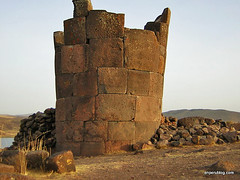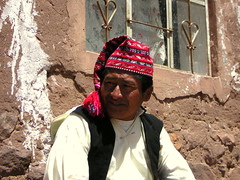Ñain An sculptures: New secrets revealed at ancient Chan Chan
The discovery of 17 wooden statues at Chan Chan are enough to change our understanding of the Chan Chan urban centre. Embedded in the walls of the later Ñain An complex, also known as Bandelier, the figures are thought to have bid farewell to the deceased leaders.
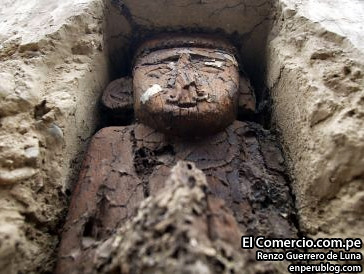
Produced between 1450 and 1472, in the later part of Chan Chan's 600 year history
Discovered four months ago, but revealed to the public just yesterday, archaeologist Cristóbal Campana explains that the wooden figures were intended to lead the transition from worldly to divine. This would give the complex, Ñain Am, one of many large urban administrative centres that were closed off once the ruler that built them had died, another function not yet realised.
Archaeologists believe that these Chimú sculptures could be the most important discovery that has been made in Chan Chan, as the objects do not represent warriors nor religious idols, but well-wishers who respectfully bid farewell to their authorities. This is a seemingly new and different function, though they state that further studies are needed to discover the true meaning of these pieces.
Male and Female
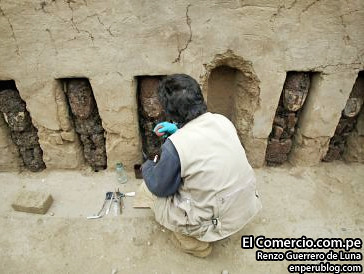
The 17 statues were found embedded in the wall
The 17 statues found at the entrance to Ñain An are different from others found at Chan Chan, particularly those found in Rivero in 1970 and in Valverde in 2006.
Wooden statues discovered in the past had spears in their hands, they were warriors guarding entrances. However, these new discoveries are of both men and women and each one is different, each is an individual with its own subtle differences.
According to Cristóbal Campana, in the hands of female sculptures are Spondylus shells, while the men were found with snails. Moreover, where each statue is embedded in the wall, the remains of shell were found of both molluscs along with them. With just this detail, says the specialist, the course of many studies of the Chimú capital will change.
“We still have a lot of research to perform – iconographic and palaeobotany, but we believe that what we are dealing with will give new meaning to Chan Chan. This is a new episode in the studies being carried out in this citadel for so long. It’s not bad that it will soon be a common occurrence to change the history of Chan Chan in the wake of these new discoveries”, the archaeologist told reporters at the unveiling.
Special Treatment
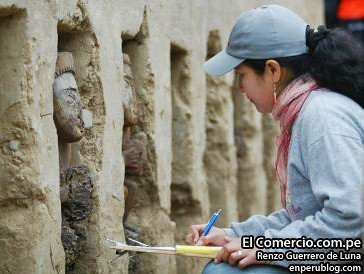
More studies need to be undertaken
Archaeologist Arturo Paredes, head of the Department of Conservation and Valorisation of Chan Chan, explains that in the coming days the sculptures will be excavated and relocated to the site museum for further study. He explains that of the 17 sculptures, 12 are in good condition while the rest have been affected by worms that have eaten the wood and will need special treatment.
Because of security concerns, the items can not be left where they were found, they would be too easy to steal, the also reason why the discovery has been kept secret for so long. But the archaeologist also explains the the site will still need to be more heavily guarded as there are likely to be more statues discovered in the area.




